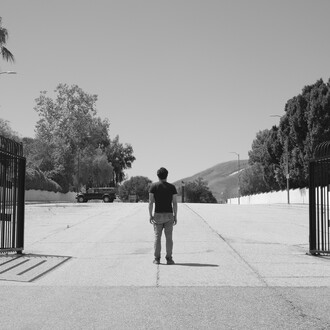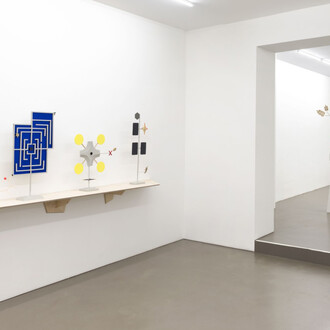María José Arjona’s exhibition presents an ongoing interdisciplinary project that the artist has been developing since 2022. Bringing together video works, sound compositions, drawings, scores, photographs, and a manuscript, the project investigates the politics of memory, movement, and coexistence. The variety in the media expression of the individual components of the presentation reflects Arjona’s artistic practice, which, as a performance artist, engages spaces of resonance and movement across multiple, simultaneous formal languages.
How can movement be translated into text? What connects the act of capturing water in an image with the composition of sound? And what new relations emerge when fragments of a natural observation encounter a choreographic score?
The works on view arise from Arjona’s long-term research into water, habitats, and acoustic ecologies across diverse geographical and political contexts. These include rivers such as the Magdalena, Guaviare, Palomino, Amazon, and Cauca in Colombia, the Hudson and Miami Rivers in the United States, and the Spree in Berlin. Her seven-part video composition Rio/River (2025) weaves together moving image studies from these sites with radically abstracted soundscapes. At times, the audio evokes birdsong or other traces of natural life, at others, it shifts toward the deep, reverberating tones of electronic sound. These layered explorations culminate in a body of work that is materially and conceptually fluid, embodying the artist’s interest in the interconnections between bodies, environments, and sonic ecosystems.
Echoing the exhibition’s title, a constellation of works on paper stretches the length of the room, like sediments, forming a current of overlapping inscriptions, a narrative composed of interwoven voices. The twists and turns of the water speak to the movement of bodies in the space, to the carcasses of drowned animals, and to the artist’s words: “To move non-linearly is to match sediment’s logic.”
Another central element of the exhibition is a manuscript, presented in this constellation for the first time in its complete form. This work foregrounds the unique, previously underexamined role of writing in Arjona’s practice. As with the other works on view, the manuscript remains open-ended and in process. The entire project will be performatively activated and further developed later this year at the Bienal de Arte Paiz in Guatemala, where it will continue to evolve as a living archive.
Drawing on performance, ecological thought, and archival theory, Arjona’s project reframes the archive not as a site of static preservation but as a dynamic, elastic field animated by choreographic attention. The work does not document but listens; it does not fix, but orients.
María José Arjona is a performance artist whose interdisciplinary practice explores time as a generative force in the construction of socio-affective structures. She repositions the archive not as a repository of the past but as a living interface for imagining collective, horizontal futures. With a background in contemporary dance and long-durational performance, Arjona integrates sound, drawing, movement, and experimental writing to create choreographic environments that activate perception and memory through embodied attention. She is currently a Fellow of the DAAD Artists-in-Berlin Program (2024–2025).
(Curation and text by Melanie Roumiguière)
















